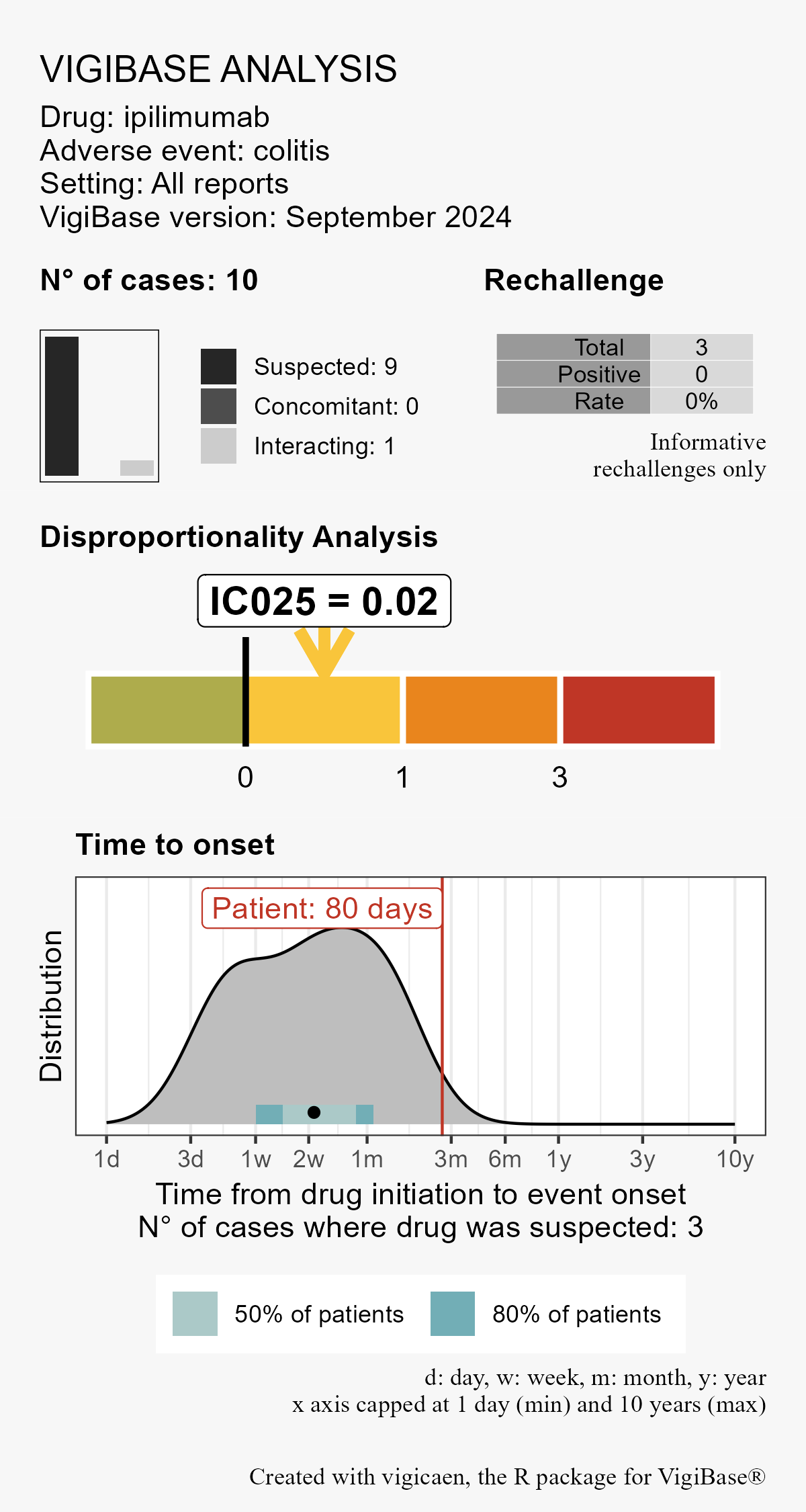

Visit the package website
The goal of vigicaen is to provide tools to analyze VigiBase Extract Case Level.
VigiBase is the World Health Organization’s (WHO) global pharmacovigilance database of individual case safety reports. It is maintained by the Uppsala Monitoring Centre in Sweden.
This package is NOT supported nor reflects the opinion of the WHO, or the Uppsala Monitoring Centre.
Users are assumed to be familiar with pharmacovigilance analysis principles. Some useful resources can be found here (English) or here (French).
vigicaen is an R package, so you need to have R installed on your computer, and optionally RStudio.
Use of VigiBase Extract Case Level and the subsequent WHODrug data requires a license from the Uppsala Monitoring Centre.
Use of MedDRA requires a license from MedDRA.
Of note, academic researchers are provided with accommodations for these licenses.
Vigibase ECL tables are very large, your computer must meet the following requirements:
Free disk space of at least 50GB
At least 16GB of RAM
A not too old processor (partial tests conducted on 2019 Intel 7, and more recent 2023 AMD Ryzen 3)
There are 2 types of users this package is aimed at:

vignette("routine_pharmacovigilance").

From CRAN
install.packages("vigicaen")
Development version from GitHub
devtools::install_github("pharmacologie-caen/vigicaen")
Find the latest Released version here
Download source code as a tar.gz file.
If you use RStudio, click on “Tools”, “Install Packages…”, select “Package Archive file” and locate the tar.gz file on your computer.
Alternatively, you can use the following command in R:
install.packages("path/to/vigicaen_X.XX.X.tar.gz", repos = NULL, type = "source")
Visit the package website
Good places to start your journey:
Set the stage with
vignette("getting_started")

You are working on a colitis case reported 80 days after ipilimumab initiation.
You would like to know the information component (possibly restricted to a specific population, e.g. older adults), and the time to onset reported for this reaction.
library(vigicaen)
# Step 1: Load datasets (or use example sets
# as shown below)
demo <- demo_
adr <- adr_
drug <- drug_
link <- link_
mp <- mp_
meddra <- meddra_
# Step 2: Pick a drug and a reaction
d_code <-
list(
ipilimumab = "ipilimumab"
) |>
get_drecno(mp = mp)
a_code <-
list(
colitis = "Colitis (excl infective)"
) |>
get_llt_soc(term_level = "hlt", meddra = meddra)
# Step 3: Plot results
vigi_routine(
case_tto = 80, # your case
demo_data = demo,
drug_data = drug,
adr_data = adr,
link_data = link,
d_code = d_code,
a_code = a_code,
vigibase_version = "September 2024"
)

You want to perform a disproportionality analysis between nivolumab
exposure and colitis reporting (reporting odds-ratio or and
information component ic).
library(vigicaen)
demo <-
demo_ |>
add_drug(
d_code = ex_$d_drecno,
drug_data = drug_
) |>
add_adr(
a_code = ex_$a_llt,
adr_data = adr_
)
demo |>
compute_dispro(
y = "a_colitis",
x = "nivolumab"
)
#> # A tibble: 1 × 9
#> y x n_obs n_exp or or_ci ic ic_tail ci_level
#> <chr> <chr> <dbl> <dbl> <chr> <chr> <dbl> <dbl> <chr>
#> 1 a_colitis nivolumab 44 31.2 1.88 (1.23-2.88) 0.489 0.0314 95%